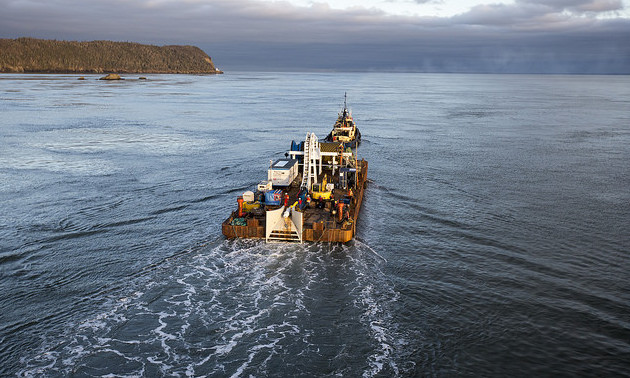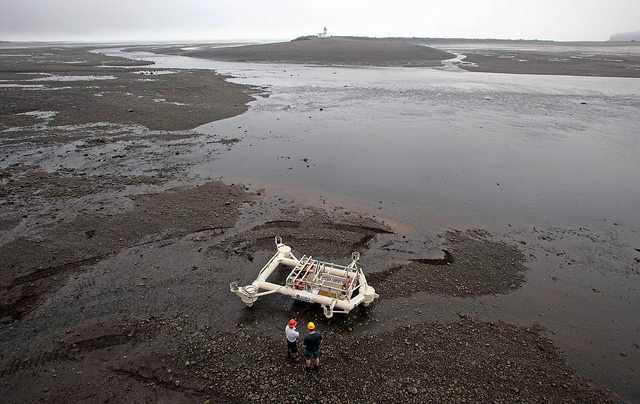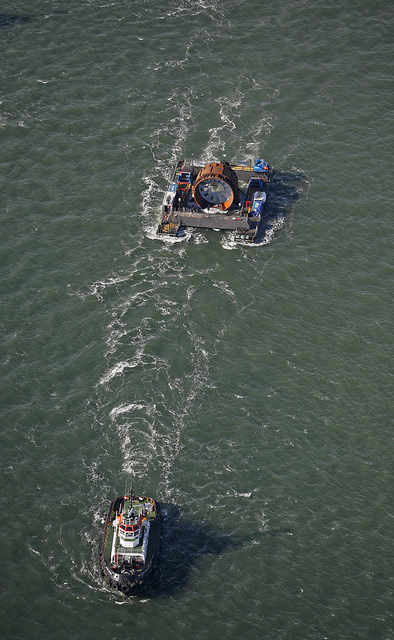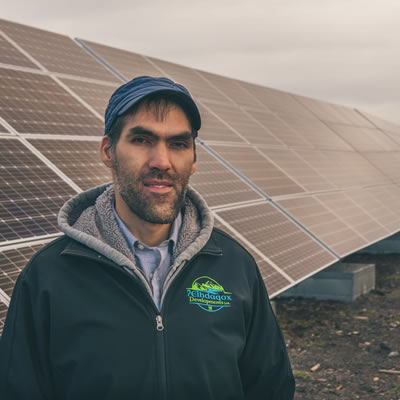Nova Scotia facility could make Canada a global leader in tidal energy
By capturing the energy that is inherent in the tides, the movement of water can be converted into electricity

Wired for power: FORCE's subsea cable network totals 11 kilometres and 64 megawatts—enough capacity to power 20,000 homes during peak flows. — Photo courtesy RJM/Len Wagg
A tidal energy facility on the Bay of Fundy is poised to make Canada a leader in a new form of clean, emission-free electrical energy.
The Fundy Ocean Research Center for Energy (FORCE) is Canada’s leading research centre for in-stream tidal energy.
Located on the Minas Passage at the eastern end of the Bay of Fundy, FORCE provides the infrastructure to industrial developers who are developing electrical power for the grid by harnessing the energy created by tidal water rushing through underwater turbines.

The Fundy Advanced Sensor Technology monitoring platform is being prepared for sea trials during low tide in the Parrsboro Harbour, Minas Passage. — Photo courtesy Darren Pittman/ImagesEast
“The turbines are like underwater windmills,” said Matt Lumley, a FORCE spokesman in the organization’s Halifax corporate headquarters.
Tidal energy is created by the combination of the Earth’s rotation and the gravitational pull of the moon and sun. Together, they move the water in the world’s oceans back and forth, twice a day, like clockwork.
By capturing the energy that is inherent in this ebb and flow, the movement of water can be converted into electricity. And because the forces of the sun, moon, and Earth are not depleted by harnessing the flow of water, the electricity created by tidal energy is renewable.
The Bay of Fundy is one of the world’s great tidal machines. On a flood tide, 160 billion tonnes of seawater flow into the Bay of Fundy. That’s more than four times the estimated combined flow of all the world’s freshwater rivers during the same six-hour interval.
The vertical tidal range can be over 16 metres, giving the Bay of Fundy the highest tides in the world. The horizontal range can be as much as five kilometres, exposing vast areas of ocean floor.
The tidal currents in the Bay of Fundy are fast, exceeding 10 knots (five metres/second, or 18 kilometres/hour) at peak surface speed. Beachcombers in New Brunswick and Nova Scotia who have ventured too far from shore have been known to meet an untimely end when a high tide comes rushing in.
Early research by the California-based Electric Power Research Institute (EPRI) identified the Bay of Fundy as potentially the best site in North America for tidal power generation, with an excellent resource close to an existing electricity grid. EPRI estimated a potential of almost 300 megawatts, which is enough power for about 100,000 homes in the Minas Passage alone.

The first large-scale OpenHydro turbine tugged into position at the FORCE site near Parrsboro, Nova Scotia, in November 2009. — Photo courtesy CNS/Len Wagg
Unlike wind and solar energy, tidal energy is an emerging industry that is not yet at commercial scale. But tidal energy has a big advantage over its older green energy cousins. Unlike them, tidal energy is very predictable, flowing in and out every day on a schedule that is predictable hundreds of years in advance.
“Canada is involved in the early stages of tidal energy,” said Lumley. “Many skilled people and industries in Atlantic Canada are already involved in it. And with 11 universities in Nova Scotia alone, it is a big opportunity for Canadian researchers.”
FORCE was created in 2009 as a private not-for-private research organization by the Nova Scotia Department of Energy and Encana Corporation, with a contribution from the Government of Canada.
It has formed partnerships with such tidal energy developers as Atlantis Resources Corporation, Minas Energy, Black Rock Tidal Power and Cape Sharp Tidal.
A joint venture between Emera Inc. and OpenHydro, Cape Sharp Tidal wants to deploy a fully grid-connected four-megawatt (MW) tidal array in the Minas Passage, starting with a two-MW turbine deployment in 2016.
Cape Sharp said the project has the potential to be one of the world’s first multi-megawatt arrays of interconnected tidal turbines, providing energy to more than 1,000 customers in Nova Scotia.
The four-MW demonstration array will be the first phase of a commercial-scale project which, subject to regulatory approvals and environmental effects monitoring, may grow to larger output.
The turbines that will be used in the project’s first stage are 16 metres in diameter. They weigh 300 tonnes each without the base, or 1,000 tonnes each with their respective bases.
These bases or frames will sit on the seabed, while the turbine will remain about six to eight metres above the floor of the Bay of Fundy in about 40 to 50 metres of water.




